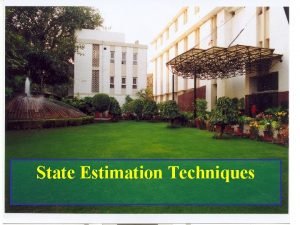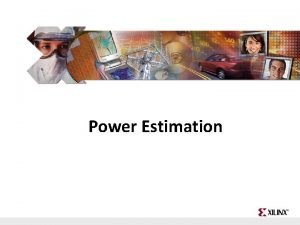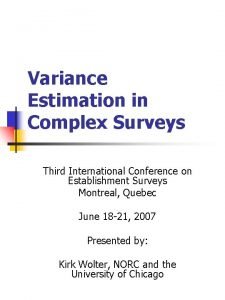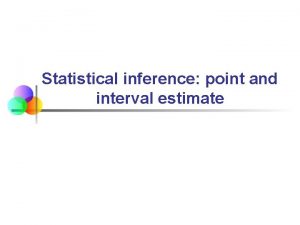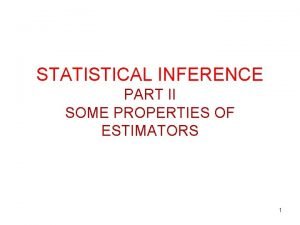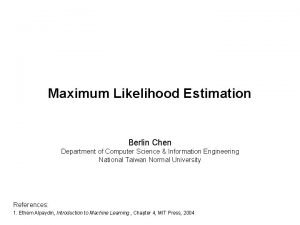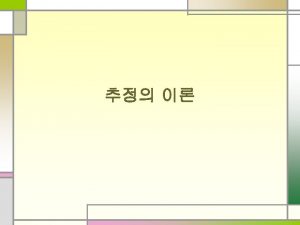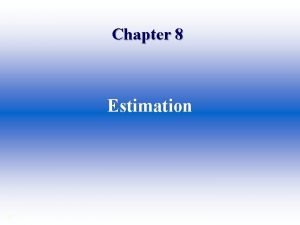Title State EstimationState Estimator Power System State Estimation









- Slides: 9

Title : State Estimation(State Estimator, Power System State Estimation, ) Date: 23/03/2020 Name of Faculty: Mr. Ankur K. Gheewala Lecture No : (02): 2. 00 to 3. 00 SHROFF S R ROTARY INSTITUTE OF CHEMICAL TECHNOLOGY 1

STATE ESTIMATOR

Continue…. . The state estimator detects bad or inaccurate data by using statistical techniques. For this, state estimators are designed such that they have well-defined error limits and are based on the number, types and accuracy of measurements. The state estimator approximates the power flows and voltages at a bus whose measurements are not available because of RTU failure or breakdown of telephone or a communication link. Under such a conditions, the state estimator is required to make available a set of measurements to replace missing or defective data. The state estimator uses ◦ Set of measurements available from RTU. ◦ System configuration supplied by the topological processor ◦ Network parameters such as line impedances as input ◦ Execution parameters(dynamic weight adjustments)

POWER SYSTEM STATE ESTIMATION

Continue…. . The State Estimation(SE) estimates the state of the system based on a set of real-time measurements. The state of the system defines the operating conditions of the system and is usually chosen as the bus voltage magnitudes and angles. Thus, for a system of N buses, the state of the system x contains N bus voltage magnitudes and N-1 bus voltage angle (one of the bus voltage angle is chosen as the reference. ) That is x=[θ 2, …. . , θN V 1, …. . , VN]’ ……………(1) Note that once the state of the system is determined then any quantity in the system, such as line flows and power injection at any bus can be calculated.

Continue…. . Since it is not feasible to measure and telemeter the system state directly, in practice, other variables-mostly the ones that are important for the monitoring of the system, such as power generation from generation plants, load at important substation and power flows at important lines-are telemetered to the control Centre. Let, y denote the set of such measurements. As indicated before, the SE estimates the system state x based on these measurements by making use of the relationships between the measurements and the state variables. Consider, for example the measurements on small system is shown in fig.

Continue…. . If we represent the line by its total series impedance per phase y 12, then the system model for state estimation becomes the one shown in fig. , and thus the measurements can be expressed in terms of state variables x = [θ 2 V 1 V 2]’ as yi = hi (x) [where i = 1, 2…m]…………. . (2) Where the function hi (x) is called the measurement function corresponding to the measurements yi. Note that the equality in equation-(2) would hold if the measurements and the model were perfect. However, the actual measurements and the model may contain errors. Assume that we can have an accurate system model, Equation-(2) can be modified to include the measurements error as Yi = hi (x) + ri , i=1, 2…. , m ………………. . (3)

Continue…. . Where, ri = the error in measurements i. Hence, for the general case, we have a set of m equations relating m measurements to n states y = h(x) + r………. . . . . (4)

Assignment Questions: • 1. Explain the functions of state estimator with the diagram. • 2. Explain Power system state estimation. • Hard copy submission date (31/3/2020) • Mr. Ankur K. Gheewala (8511167103) SHROFF S R ROTARY INSTITUTE OF CHEMICAL TECHNOLOGY 9
